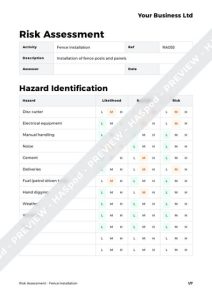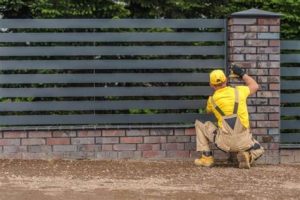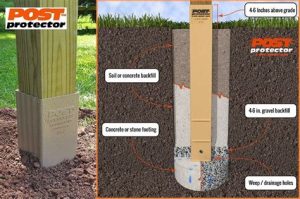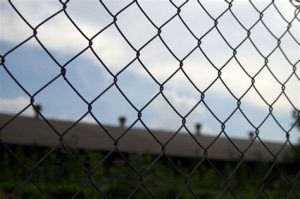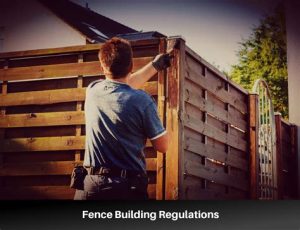Explore essential tips for understanding HOA regulations, obtaining permits, and resolving disputes to successfully navigate property boundary restrictions and fence design standards.When it comes to enhancing your property, installing a fence can be a valuable addition, providing privacy, security, and curb appeal. However, if you live in a community governed by a Homeowners Association (HOA), the journey to erecting that fence can be intricate. Understanding the regulations set forth by your HOA is crucial to ensuring compliance and avoiding potential disputes. In this blog post, we will guide you through the essential steps of navigating HOA rules and obtaining necessary fence permits. We’ll explore the key aspects of property boundary restrictions and aesthetic standards that must be met during the design process. Additionally, we’ll offer tips for resolving any disputes that may arise with your HOA board, ensuring your fencing project goes smoothly from start to finish. Whether you’re a new homeowner or a seasoned resident, this guide will help you navigate the complexities of HOA regulations with confidence.
Understanding HOA regulations
Homeowners Associations, commonly referred to as HOAs, are established to maintain a certain standard within residential communities. They formulate regulations that govern various aspects of property ownership, including the appearance of homes, landscaping, and even the installation of fences. Understanding these HOA regulations is crucial for homeowners who want to ensure compliance and avoid potential disputes.
Being proactive in understanding and adhering to these HOA regulations can save homeowners time and money. For instance, before proceeding with a fence installation, it’s advisable to attend HOA meetings or communicate with board members to clarify any uncertainties regarding regulations.
Obtaining fence permit requirements
When it comes to installing a fence, one of the key steps is to understand the fence permit requirements set by your local government and Homeowners Association (HOA). Obtaining the correct permits is not only essential for compliance but will also help you avoid potential fines or having to dismantle your fence later. Below are some essential points to keep in mind.
First and foremost, check with your local zoning office or building department. Many municipalities require a building permit for any fence over a certain height, typically between 4 to 6 feet. It’s crucial to verify the height restriction specific to your area.
- Determine the type of fence you want to install (wood, vinyl, chain-link, etc.).
- Check the local regulations for height and style restrictions.
- Contact your HOA for any additional aesthetic requirements.
- Obtain a copy of the necessary permit application from your local authority.
To facilitate the process, you may also need to submit a detailed plan, including measurements and materials. In some cases, you might be required to provide a survey of your property to establish the exact boundaries—this is critical to avoid trespassing issues with your neighbors. After submitting your application, be prepared to wait for an approval, which can take anywhere from a few days to several weeks.
In summary, being diligent about the fence permit requirements can save you from headaches down the road. Always remember to keep communication open with your HOA and local offices to ensure compliance and satisfaction with your new fence.
Navigating property boundary restrictions
Navigating property boundary restrictions is an essential aspect of homeownership, especially when you are contemplating any form of landscaping, construction, or modifications to your property. Understanding these restrictions ensures that you remain compliant with both local laws and the Homeowners Association (HOA) regulations that govern your community.
Before making any decisions regarding your property, it is vital to conduct a thorough land survey to identify your exact property lines. This can help you avoid conflicts with neighbors or issues with noncompliance that could lead to legal disputes. A properly conducted survey will outline the boundaries and may also highlight any easements or setbacks that are applicable to your property.
In addition to the survey, reviewing the HOA bylaws concerning property boundaries is crucial. This documentation outlines the specific restrictions and guidelines imposed by the HOA, which may include regulations on fencing height, type, materials, and placement. Failure to adhere to these regulations can result in fines or mandatory removal of any installations deemed non-compliant.
Meeting aesthetic standards for fence design
When considering a new fence for your property, it’s crucial to understand the aesthetic standards set by your Homeowners Association (HOA). These standards are put in place to maintain a cohesive look and feel within the community while ensuring that property values remain high.
Before selecting materials, colors, or styles for your fence, review your HOA’s design guidelines. These guidelines may include specific requirements regarding the type of materials (wood, vinyl, metal), the appropriate height of the fence, and even the color palette that is permissible.
| Standard | Description |
|---|---|
| Height | Most HOAs have a maximum height for fences, typically ranging from 4 to 6 feet. |
| Material | Associations often prefer specific materials to maintain uniformity across properties. |
| Style | Fences should conform to community styles, which might favor certain designs like picket or privacy fences. |
| Color | Colors may need to align with the neighborhood’s palette, avoiding overly vibrant or unconventional choices. |
After you have selected a design that adheres to these aesthetic standards, it’s a good idea to present your plans to the HOA Board for approval. This step can prevent potential disputes and ensure that your fence enhances rather than detracts from the community’s appearance. Remember, understanding and following these standards can save you time and resources in the long run, making your property a welcoming part of the neighborhood.
Resolving disputes with HOA board
Dealing with a Homeowners Association (HOA) can be a rewarding experience, but it’s not without its challenges. One of the most significant hurdles homeowners may face is resolving disputes with the HOA board. These disputes can arise from various issues, including fence regulations, maintenance responsibilities, and community rules. Understanding how to navigate these situations can help homeowners maintain harmony within their community.
When conflicts occur, the first step is to review your community’s governing documents. These documents typically outline the rules and regulations that both homeowners and the HOA board must abide by. Familiarizing yourself with these rules allows you to approach the HOA board with a clear understanding of your rights and obligations. Often, disputes arise from miscommunication or differing interpretations of these documents.
If informal discussions do not resolve the issue, it may be necessary to escalate the matter. Homeowners have the right to request a meeting with the board to discuss their concerns. During this meeting, it can be helpful to provide documentation supporting your position, such as photos, letters, or relevant laws. Having a well-structured approach can significantly enhance your ability to advocate for your interests while fostering a constructive dialogue with board members.
Frequently Asked Questions
What is an HOA?
An HOA, or Homeowners Association, is an organization in a subdivision, planned community, or condominium that makes and enforces rules for the properties and their residents.
Why do HOAs have rules regarding fences?
HOAs establish rules regarding fences to maintain a consistent aesthetic and property values within the community, ensuring that all structures align with the neighborhood’s overall look and feel.
Do I always need a permit to build a fence?
In most cases, yes, building a fence requires a permit, particularly if it exceeds a certain height or is built in a specific zone. Check with your local government to understand the regulations in your area.
How can I find out my HOA’s specific rules about fences?
You can review your HOA’s governing documents, such as the Covenants, Conditions, and Restrictions (CC&Rs) or contact your HOA board directly for details regarding fence regulations.
What are common restrictions on fence materials and height imposed by HOAs?
Common restrictions often include limitations on materials, like prohibiting chain link or barbed wire, and height restrictions, typically ranging from 4 to 6 feet, to maintain neighborhood aesthetics.
What is the process for obtaining a fence permit?
The process usually involves submitting a permit application to your local zoning office, providing site plans, and possibly waiting for inspections, depending on local regulations.
What should I do if I receive a violation notice from my HOA regarding my fence?
If you receive a violation notice, review your HOA rules, ensure compliance, and consider reaching out to your HOA for clarification; sometimes, you may be able to appeal or request a variance.
